Named after the Equator, which cuts through the top portion of the country, Ecuador is a gem hidden amongst South America’s expansive terrain. It’s famous for being host to the Galápagos Islands, as well as known for its other amazing natural landscapes.
Nature is king in Ecuador and with four unique landscapes, the country has been named one of the seventeen mega-diverse nations in the world. The four distinct areas of Ecuador include the Amazon Basin (el Oriente), the Andes Mountains (la Sierra), the Coast (la Costa), and the Galápagos Islands.
Bienvenidos – Welcome to Ecuador!

For nature enthusiasts and adventure seekers, Ecuador is paradise. With plenty of places to explore, each region has its own distinct characteristics. In the Amazon, you can explore Yasuní National Park, which is host to a biodiverse population of various plant and animal species.
In the Andes, you can climb to new heights and explore the snow-capped peaks. On the Coast, you can discover stunning beaches and tranquil fishing towns bordered by the deep blue hue of the Pacific Ocean. Finally, off of the mainland on the Galápagos Islands, you can step back into history and witness where Charles Darwin created the Theory of Evolution.
Scattered amongst all the regions are picture-perfect villages and busy cities that visually represent the country’s past with the Inca people and colonization. One historic city is Quito, which is Ecuador’s dynamic capital. Nestled in the Andes, Quito is a congested concrete jungle packed with Ecuadorian culture.
History is taken off the page in Quito, where the Incan Empire once ruled. In the streets, there are markets and shops that sell Ecuadorian classic art like straw hats and colorful textiles. Modernity has also caught up and mixed with traditional culture, there are new bars and restaurants to provide entertainment.
- Culture and Language
- Spending Budget
- How to Get Around
- Top Cities to Visit
- Points of Interest
Culture and Language
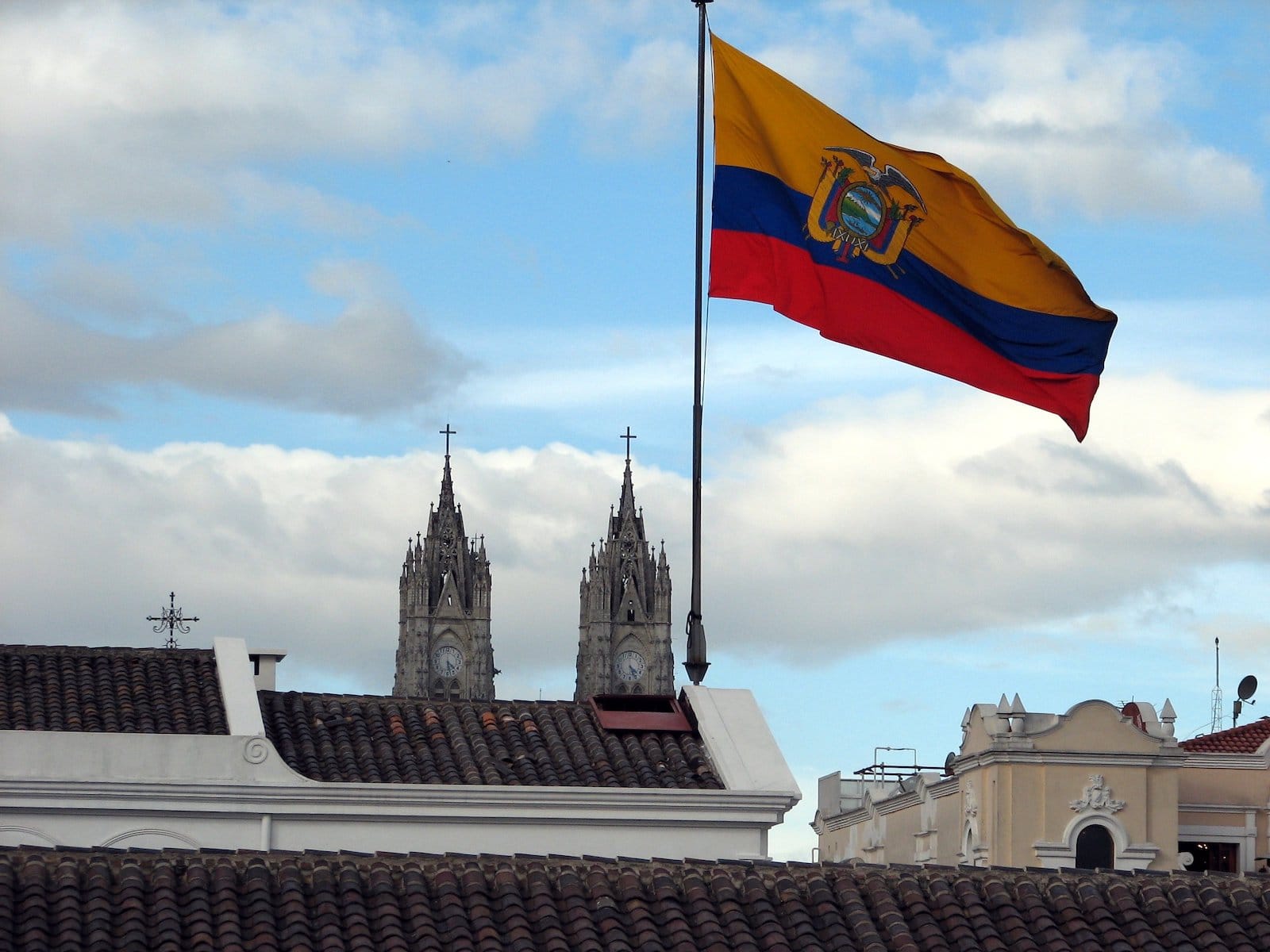
Ecuador’s history is expansive, and most historians agree that there are six eras, which span over 8,000 years. The pre-Columbian empire was dominated by the Incas, but it was founded by ancient tribes.
The Incas conquered these tribes and Ecuador was a part of their expansive empire. While the Incas ruled for hundreds of years with impressive innovations, the empire eventually entered a civil war.
Ecuador History
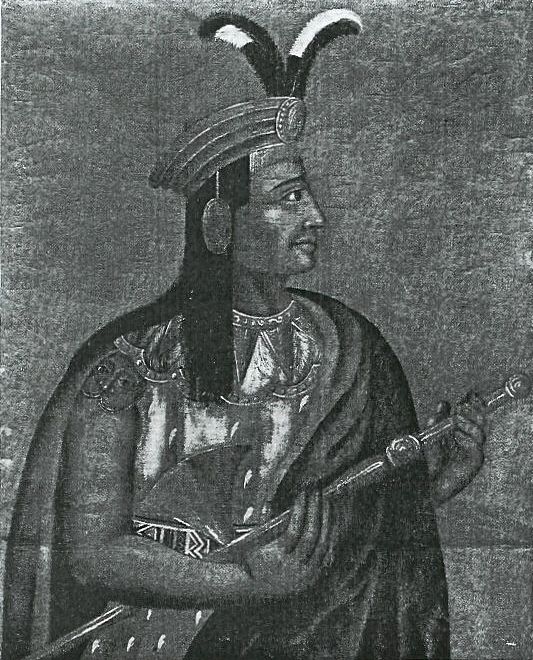
During the Incan civil war, Spanish conquistadors discovered Ecuador. With war and disease ravaging Ecuador, the conquistadors who were led by Francisco Pizarro began their quest to conquer the Inca. The Battle of Cajamarca brought defeat to the empire as the last Incan Emperor was killed in Ecuador.
The defeat of the Incan emperor paved the way for Pizzaro to conquer Peru. The end of the Incan Empire was also the time that Spanish colonization began to expand throughout Ecuador and Peru.
Under Spanish rule, encomiendas were created, which enslaved the local people. The growth of both the capital and the coastal port of Guayaquil was significant during the colonial period, but not stable. Difficulties in the economy eventually led to Ecuador’s War of Independence from 1820 to 1822.
With help from Venezuela’s famous military leader, Simón Bolívar, Ecuador began the road to independence. In May 1822, Ecuador’s leader Antonio José de Sucre defeated Spain, and the country was declared an independent republic. However, stability was still shaky, and the country struggled through periods of democratic and military rule.
Ecuadorian Culture
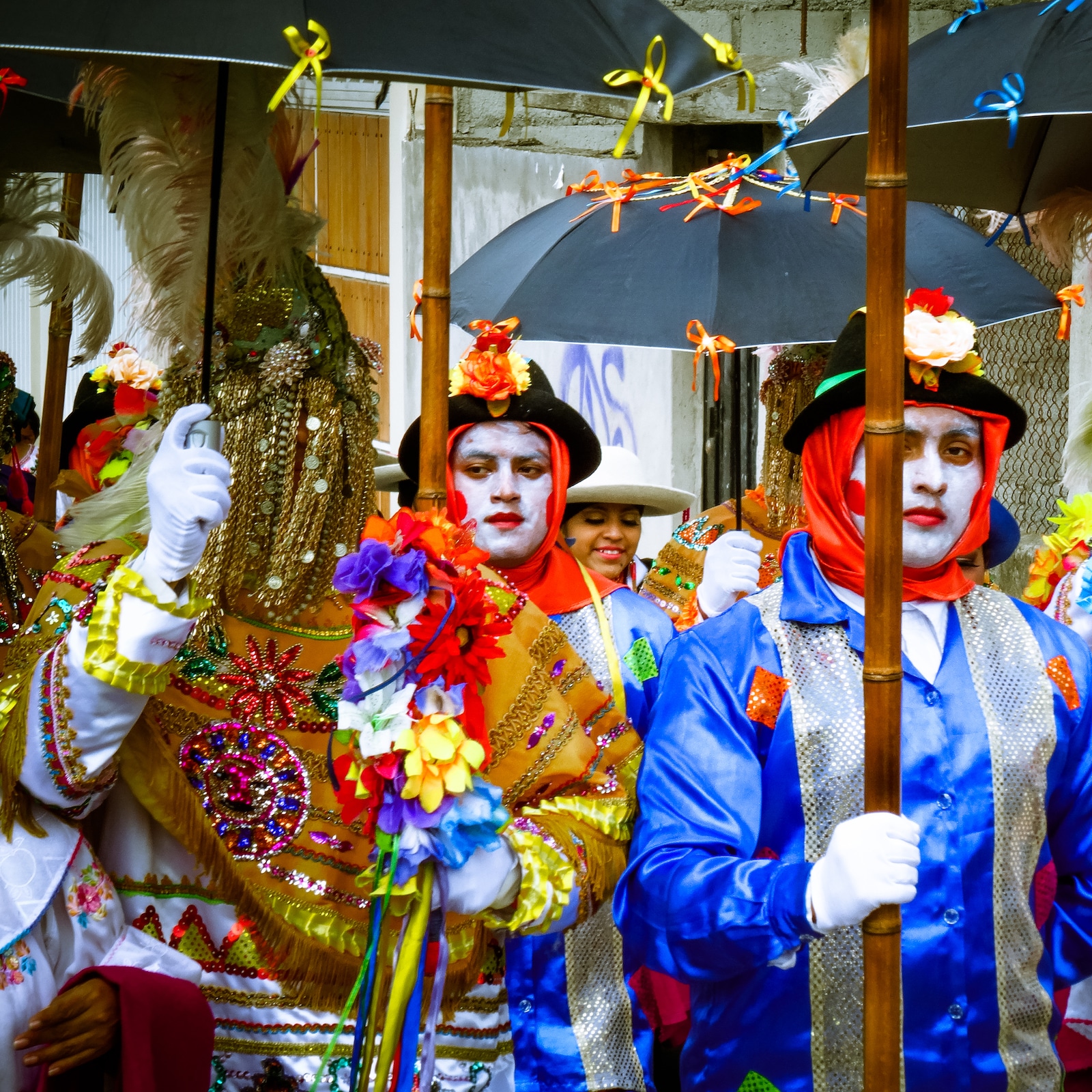
While the country is considered to be developing, many issues have prevented the economy from expanding. Ecuador is rich in natural resources, but it lacks the capital needed to develop and profit from the oil, copper, and gold hidden within its borders. Poverty is prevalent amongst the majority of the population, as wealth is unequally distributed.
However, Ecuadorian people are tough, and their “can-do” attitude has led them to be successful in handmade crafts. The large textile industry has also made Ecuador popular as it produces clothes, home goods, and fabric.
Aside from the goods they produce, local people celebrate their diverse culture by honoring tribal traditions and Spanish colonial influences.
Official Language
Diversity is also present throughout the country as various languages are spoken in different regions. While Spanish is the official language spoken in Ecuador, indigenous languages are still popular in rural communities. Some of the most common dialects include Kichwa and Quechua.
With a growing tourist industry and ex-pat community, English is becoming more prevalent in destination cities. Ecuador’s desire to expand its economy and international business sectors has also led to the growth of English being taught as a second language.
Spending Budget
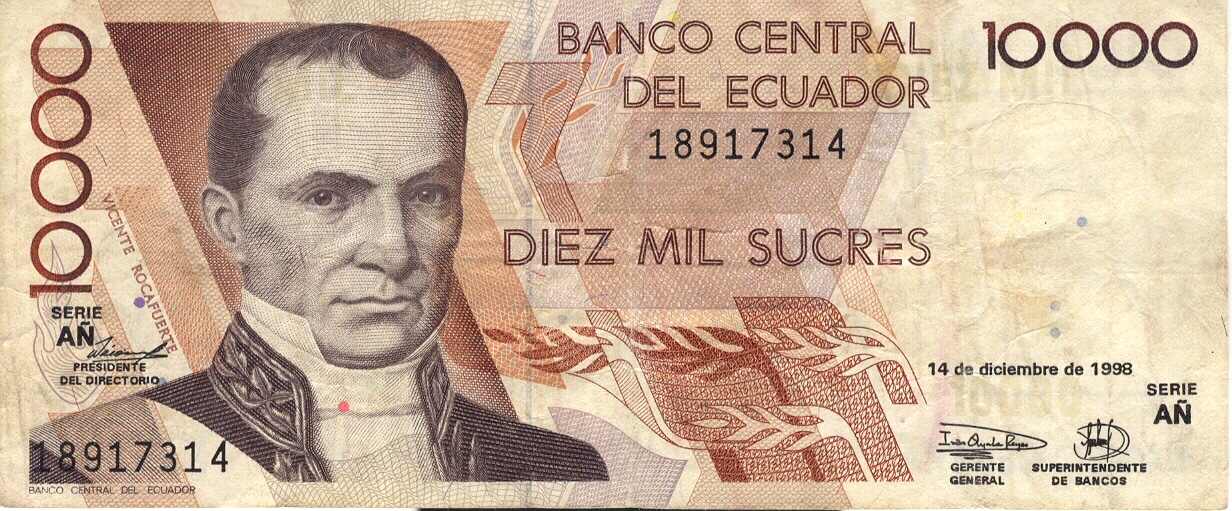
With so much to see in this small country, it is important for travelers to set a spending budget for the duration of their trip. While a larger budget would allow you more time to see the country and travel around, Ecuador is also a popular destination for budget travelers because you don’t have to spend a lot to have a great time.
However, the various costs of a vacation can quickly add up and a budget is a smart way to estimate how much you’ll spend. Include the cost of airfare, accommodation, food, drinks, and transportation. The growing tourist industry means that there are plenty of options for travelers to plan the vacation of their dreams.
Airfare
The first and oftentimes, the largest part of your budget, will be the cost of airfare. The average price for a flight from the United States to Ecuador is around one thousand dollars, if not more. Many airlines offer deals that could lower the cost. You’ll probably notice that the cost of airfare is also affected by the time of year that you plan to travel to Ecuador.

There are two international airports:
- Quito International Airport (UIO) – serves Quito, the capital of Ecuador and the largest city
- Aeropuerto Internacional José Joaquín De Olmedo (GYE) – serves Guayaquil, the capital of the Guayas Province and Ecuador’s second-largest city
As a tropical country, with the exception of the mountainous region, Ecuador’s high tourist season runs from December to April. This is when the climate is dry. However, with the Andes Mountains covering a part of the landscape, the months from June to September are also popular times to visit. It’s during these two peak seasons that the cost of plane tickets will be higher.
If you want to stick to a lower budget or just want to save some money, you should consider traveling in the shoulder season. For many travelers, the shoulder season is considered to be the few weeks before and after the peak tourist months.
Accommodations
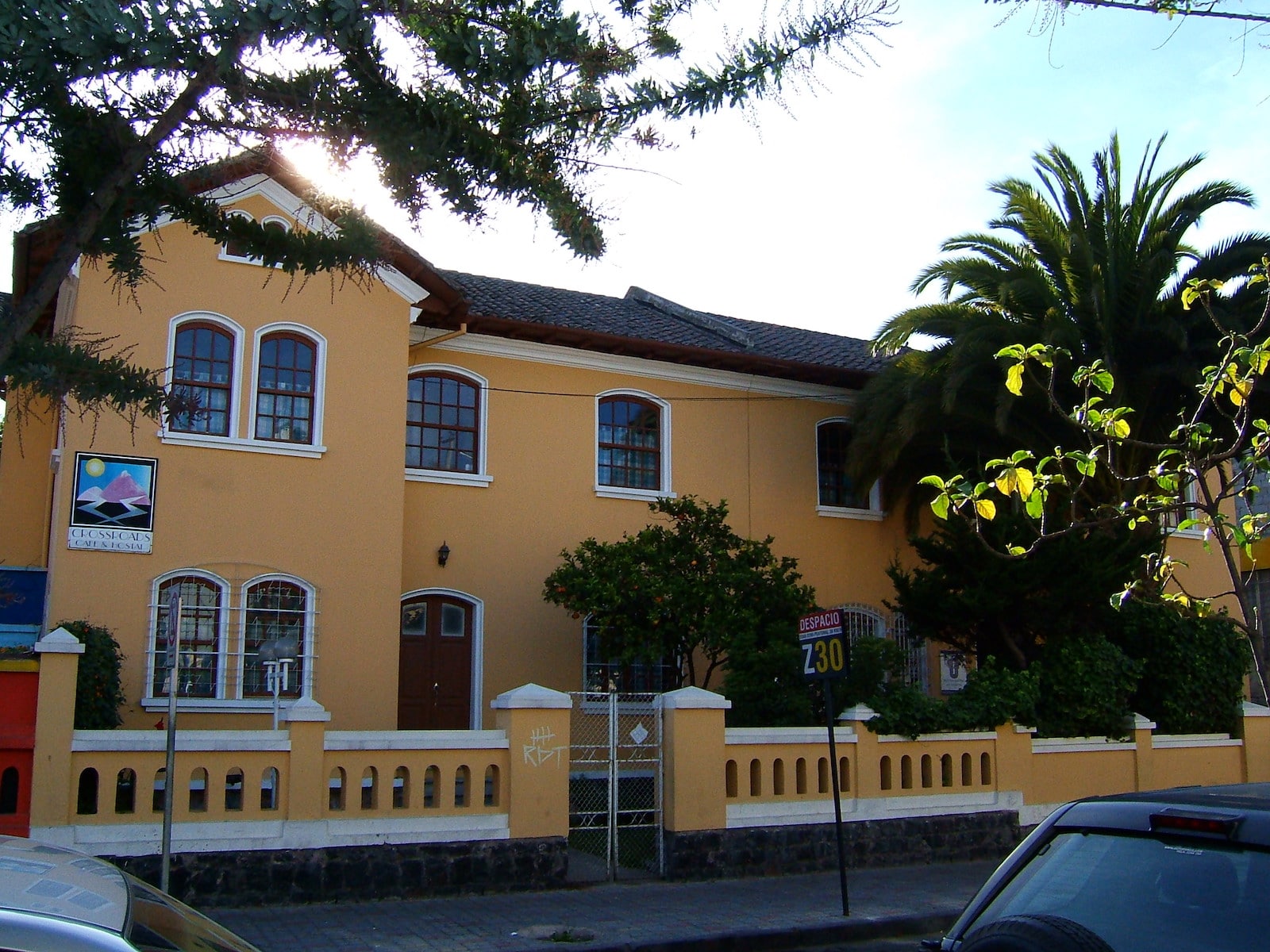
Once you have arranged your flight and decided on the dates of your trip, you’ll need to look at booking your accommodation. During the high tourist season, things can get busy in Ecuador and it is best to look for hotel options that allow you to book or reserve a room in advance.
With hostels, hotels, resorts, and Airbnb, travelers can choose which accommodation option is best for their trip. Budget backpackers will find that hostels are a very affordable option and a great way to meet other travelers. In big cities, like Quito or Guayaquil, hostels will cost more.
Not all travelers enjoy the hostel lifestyle and some people would prefer to stay in a hotel. Midrange hotels in Ecuador are affordable, but like hostels, the price can vary by location. In more rural areas, expect to pay about half the cost of urban areas.

With the Amazon rainforest and Pacific Coast beaches beckoning tourists, resorts have become popular tourist destinations. However, resorts are considered luxury stays and prices will match the quality of the location. The most expensive resorts tend to advertise their services as a package with many prices also including a tour of the local area.
Airbnb is an option in Ecuador, but listings are normally only available in popular tourist areas or big cities. In rural areas, you’re less likely to find reliable Airbnb listings. For traveling groups, it can be a great way to lower the cost of your accommodation as travelers split the fee per night. They also tend to give you more space and amenities like a kitchen.
Ecuadorian Food
Once you’ve arranged your flight and accommodation, the rest of your expenses will be left to the time that you are in Ecuador. While some resorts do offer food and transportation packages, most travelers will wait until they are in Ecuador to purchase those goods and services.
Latin flavors run deep in Ecuadorian cuisine, but each region has its own unique cuisine. In the Andes, meals are made to be hearty and feature ingredients like potato, corn, and cheese. Cuy or guinea pig is also a favorite meal in the Andes.
On the coast, seafood is the main ingredient, while Amazonian fish and yuca dominate in the Oriente (Amazon Basin). Each region has its own unique cuisine, which is why travelers are eager to visit different parts of the country.
One dish that is sold throughout most of the country is bolon de verde. Considered to be the national dish, this delicious fried ball is made of mashed plantains. The plantains are then stuffed with pork and pan-fried.
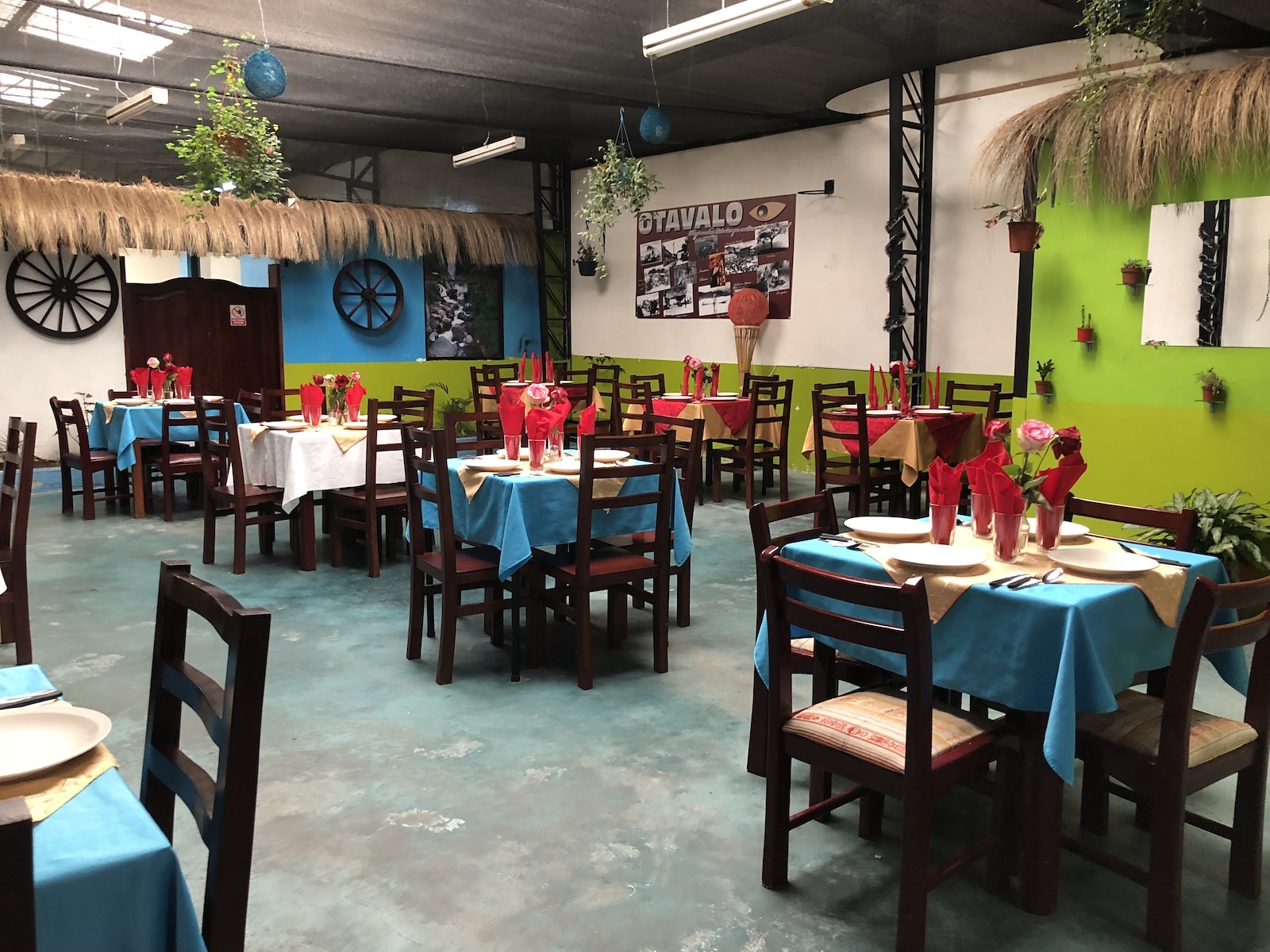
In the mountains, roasted cuy is a favorite dish and one of the most controversial for US tourists. Cuy is meat from a Guinea pig, which is eaten in a variety of ways. For Ecuadorians, cuy dates back to pre-colonization times, when people ate guinea pigs. Since the introduction of cattle by the Spanish, cuy has become a daring dish for visitors to try.
Another staple meal that can be found in all four regions of Ecuador is the fritada de chancho. This dish features fried pork served with sides that consist of fava beans, corn, or potatoes. For a snack, you can try llapingachos or an empanada de viento.
Llapingachos are fried potato patties, which are stuffed with cheese and served as a side dish or snack. An empanada de viento is more of a snack than a meal. When you translate viento to English it means air, and these empanadas are not filled with much besides air. But the crunch exterior and a light layer of cheese on the inside make them popular snacks.
Dining Out

Whether you’re looking to be adventurous and try cuy or want a fried treat, food in Ecuador is very affordable. In local establishments, meals normally cost less than tourist ones. Snacks like llapingachos in street stalls are very affordable and often cost less than a few USD.
If you would like to eat at a Western-style restaurant, you should expect to pay more. Nicer restaurants in touristy areas or resorts will be more expensive. If you’re trying to budget, you should probably avoid mid-range to luxury establishments, especially at top resorts.
If you want to drink while in Ecuador, you need to set aside a portion of your spending budget for alcoholic beverages. The local beer in Ecuador is very affordable and a bottle usually costs less than a couple of USD. In bars and restaurants, you will pay a premium price for beverages.
How to Get Around
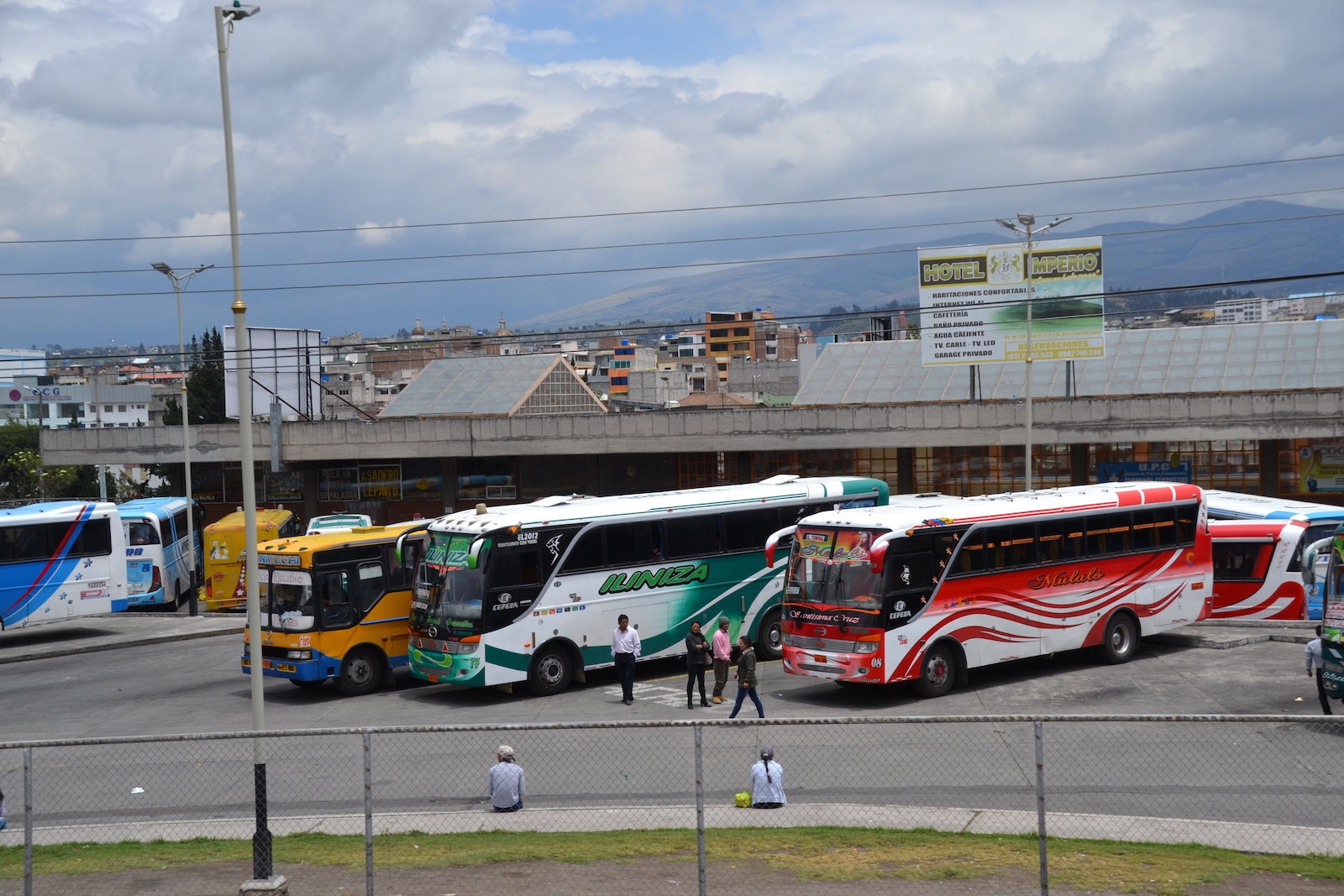
In addition to the cost of getting to, staying, and eating, you need to add the cost of transportation to your spending budget. There are a few ways to get around Ecuador, but the most popular options are buses, domestic flights, trains, and local transportation.
Buses
Buses are the easiest way to get around the country and an extensive network provides travelers with service to more remote destinations. Most buses cost a few USD per hour of travel. Most people book their bus at the station, but others use services like Wanderbus Ecuador, which has tickets. The passes range in price based on the number of stops.
Flights
If buses are too slow for your taste, you can book a flight with a domestic airline. They are a quick way to get around Ecuador and last-minute deals can make them more affordable. Most domestic flights will be fairly priced, though popular tourist destinations can be expensive.
Trains
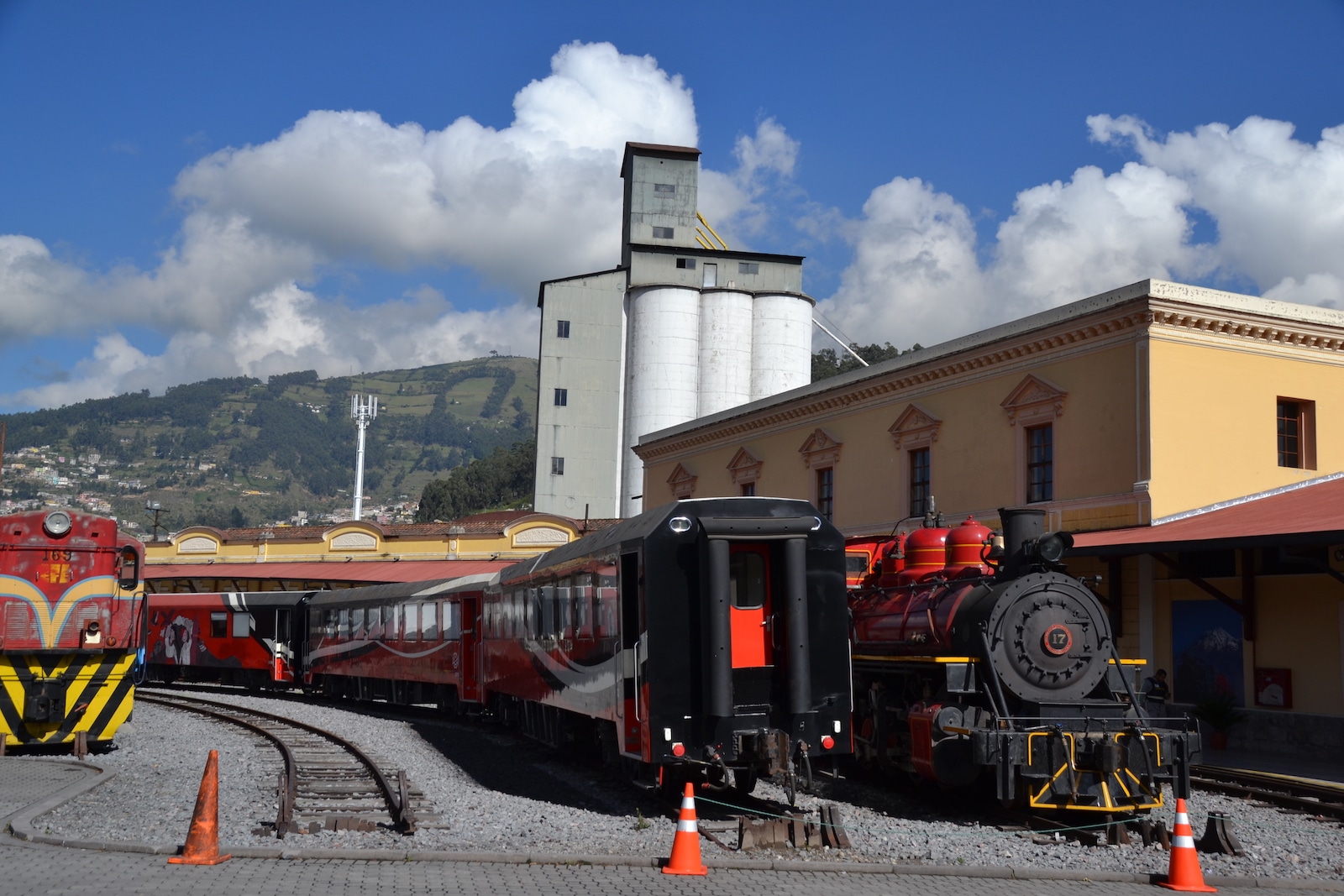
Trains are another option in Ecuador, but they do not have full service throughout the country. Instead, scenic rides like The Devil’s Nose are a popular choice for tourists to see more of the Ecuadorian scenery. Most train rides are reasonably priced.
Local Buses and Taxis
For travelers who are staying in the city, local transportation will be your best option to travel around the area. Most local bus tickets cost less than one USD and will take you on popular routes through the city.
Taxis are another option, but you need to negotiate a price with the driver before you get into the cab.
Top Cities to Visit
The diverse landscape in Ecuador turns the country into a traveler’s playground. While big cities like Quito and Guayaquil are popular destinations, you may find yourself visiting a small village off the beaten path. Here are the most popular cities and towns to visit in Ecuador.
Quito
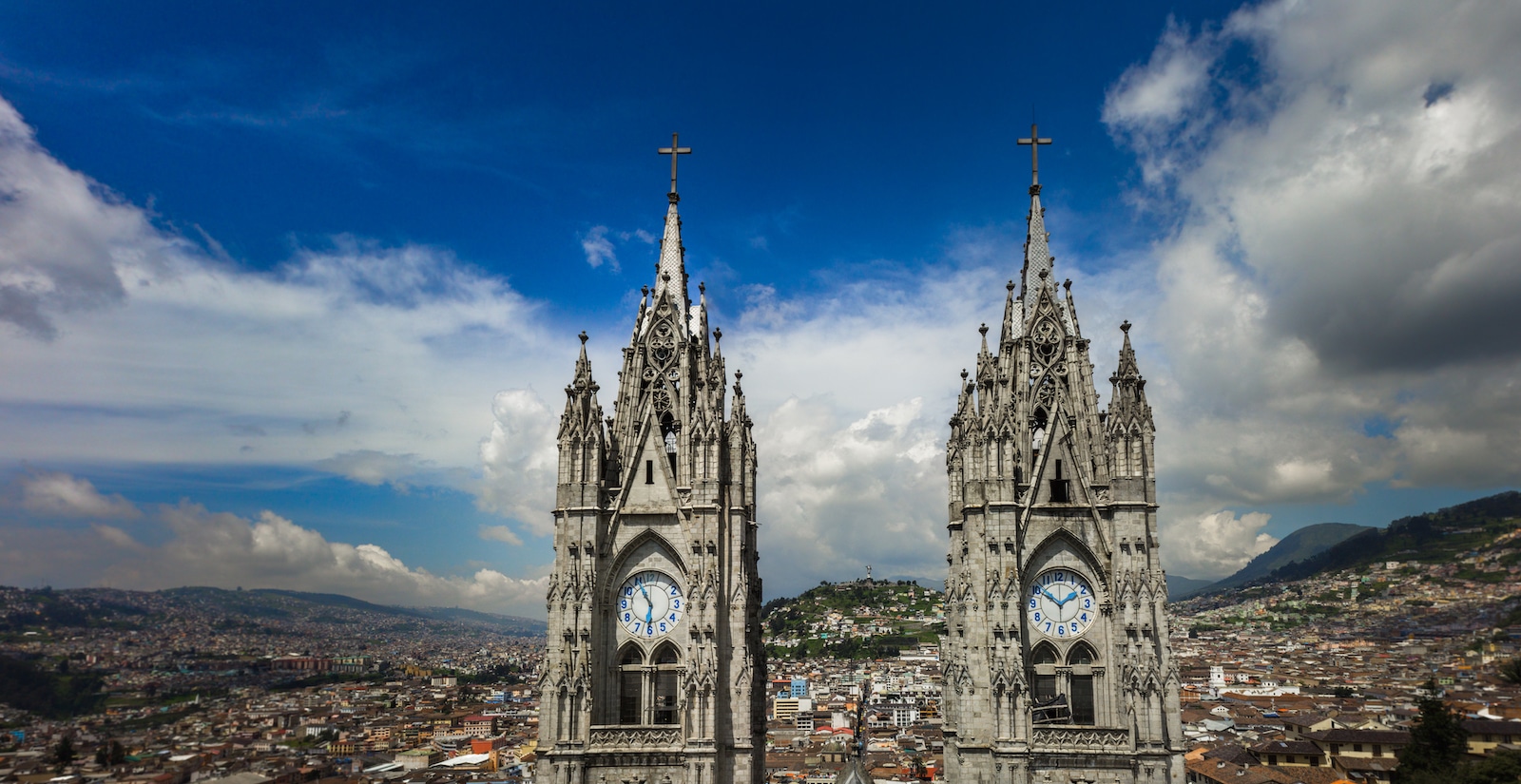
Resting at a high altitude and tucked into the Andes, Quito is the country’s capital. Aside from being the cultural hub of Ecuador, it’s most well-known for its perfectly preserved colonial architecture.
The Old Town is a popular place to go for tourists who want to explore the local markets and busy plazas. Museums will take you back to the past and highlight some of the country’s impressive history. Plus, a lively nightlife scene makes Quito a place worth exploring.
Guayaquil

While not the capital, but just as important, Guayaquil is a port city and one of the busiest in South America. The colorful houses on the hillside add to the beauty of the city. However, modernity has taken over parts of Guayaquil and modern skyscrapers fill out the hillsides too.
With lots of shops and restaurants, you can spend a few days exploring Guayaquil. For tourists who wish to visit the Galapagos Islands, this is the main port for departing boats.
Cuenca
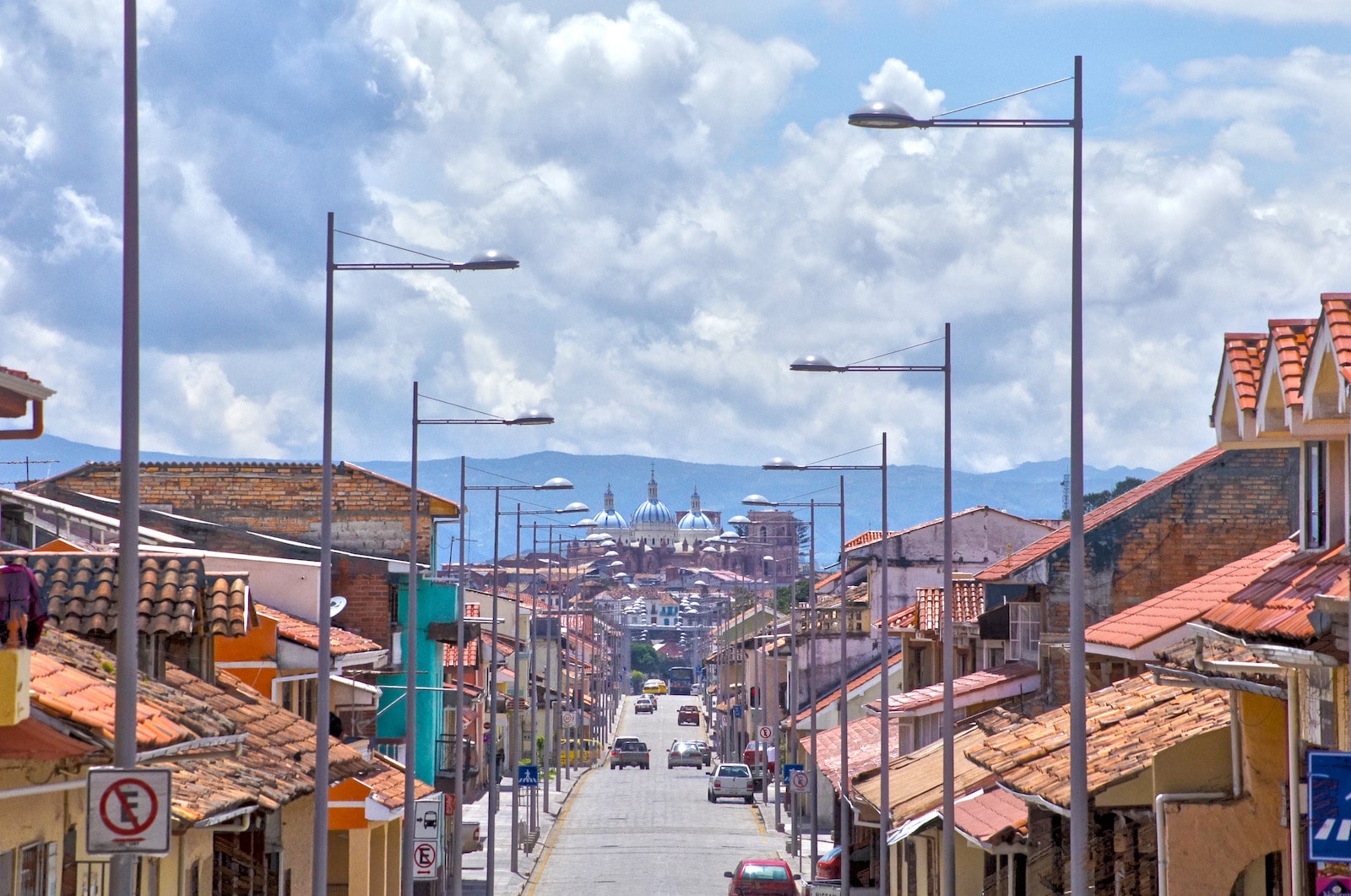
Cobblestone streets and a laidback character make Cuenca one of the most popular cities to visit in Ecuador. Similar to Quito with colonial architecture, the quieter streets are preferred by tourists. Arts and crafts are also popular in Cuenca with tourists happily perusing the local shops and galleries.
Baños de Agua Santa

Often called the “Gateway to the Amazon”, Baños de Agua Santa has become a tourist hotspot because of the town’s proximity to the world-famous rainforest. With plenty of outdoor activities, visitors can explore the nearby gorges and waterfalls on bikes, rafts, or their own two feet.
Salinas
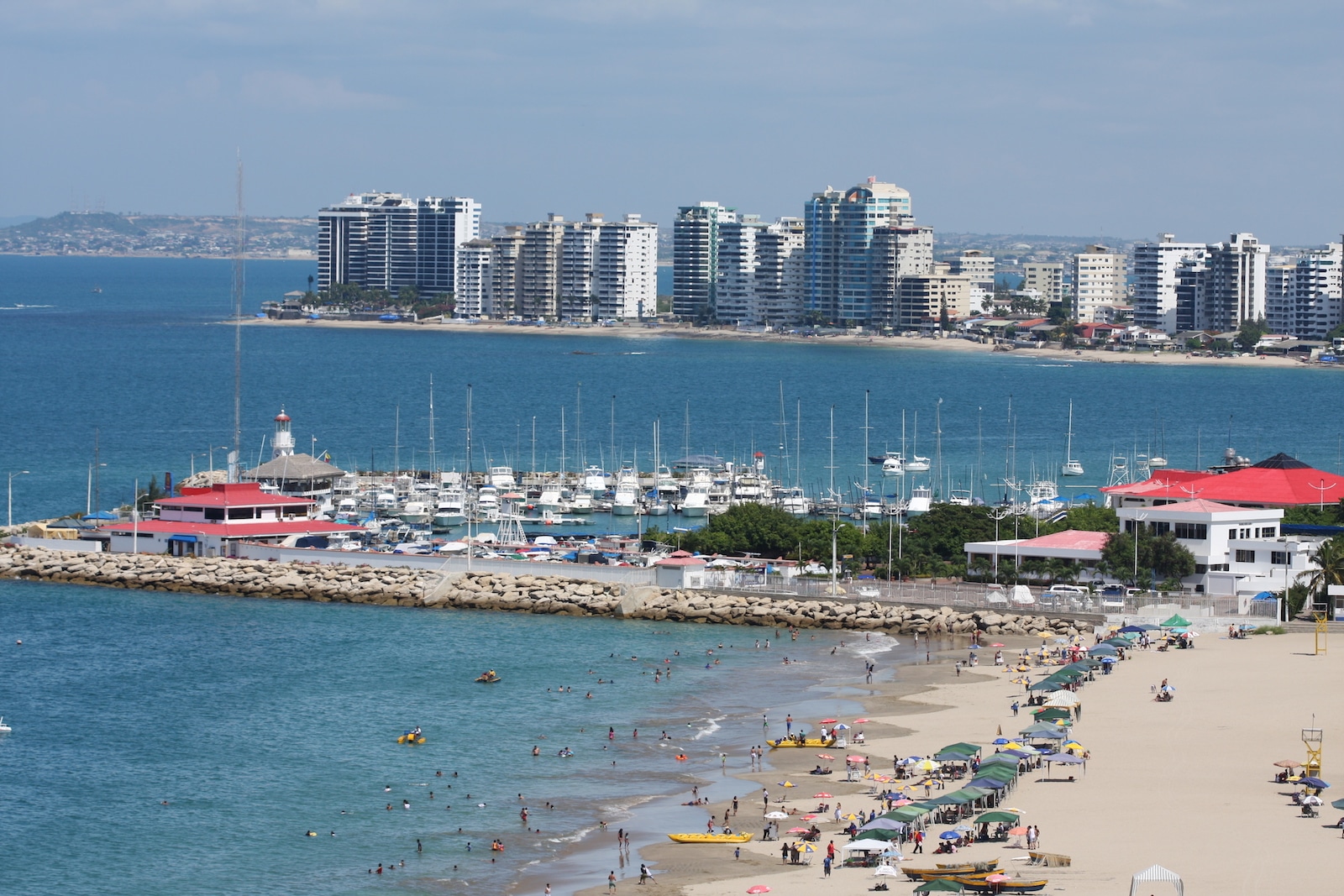
With clean sand and excellent surfing, Salinas is one of the top oceanside resort towns in Ecuador. The development of the city has brought modern high rises to the shores and made it a popular spot amongst bar-hopping tourists. With watersports galore, you can have fun in the sun and surf while you stay in Salinas.
Otavalo
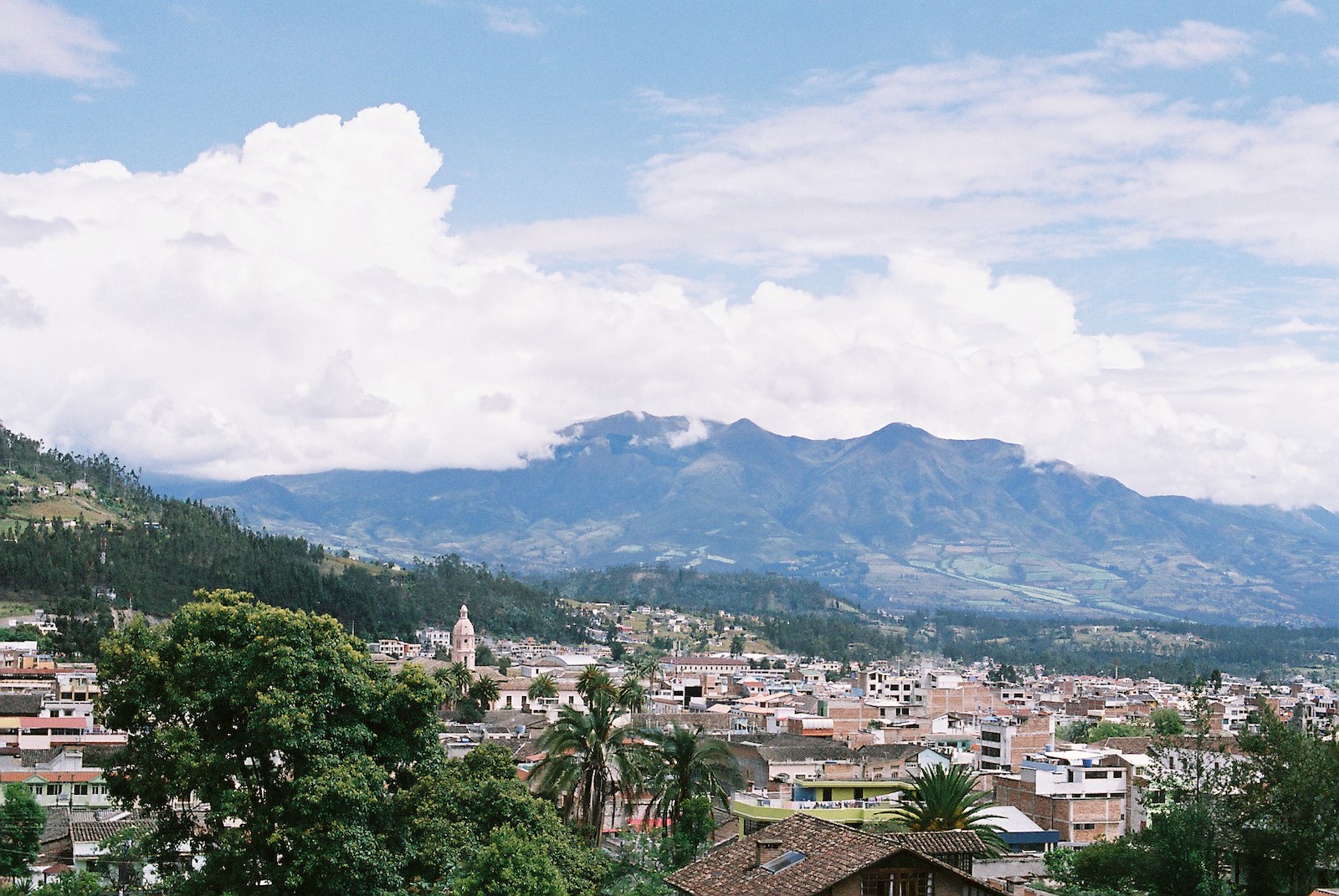
Home to Ecuador’s largest indigenous market, Otavalo is the place to go to purchase local crafts. The market is filled with handmade goods and the outdoor setting makes it a great place to take a stroll during the dry season. Aside from the market, Otavalo is known for the waterfalls and volcanoes that are nestled in the nearby countryside.
Points of Interest
If a town hasn’t caught your attention, a specific point of interest may. There are lots of areas to visit in Ecuador, which makes it difficult to choose what to see and do. Here is a list of the top tourist attractions for you to consider exploring on your trip.
The Galápagos Islands

Made famous by Charles Darwin who developed his Theory of Evolution after observing finches on the islands, the Galápagos Islands remain the most popular place to visit in Ecuador. The unique chance to view the local wildlife makes it irresistible for animal and science enthusiasts.
Puerto Ayora is the largest town in the Galápagos Islands, and it is located on Santa Cruz Island.
A trip to the island is expensive, so if you plan to visit, you will need to adjust your spending budget. Visitors can fly to the islands, but most people take a boat from Guayaquil.
The Equator
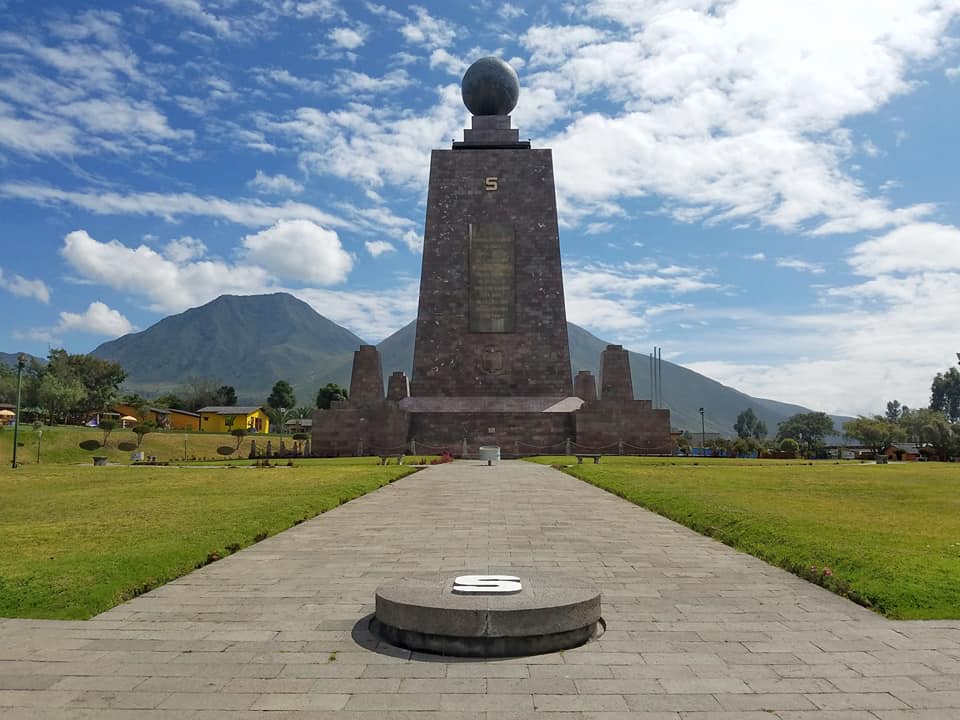
Just outside of Quito, you can visit the area where the equator runs through Ecuador. A monument called La Mitad del Mundo is a famous tourist hotspot where people go to walk the line of the equator.
However, with the equator being over 3 miles in width, the monument isn’t a precise point of where the equator rests. Instead, you’ll be in the area of the equator with the invisible line starting about 250 yards away from the monument.
Cuyabeno Wildlife Reserve

Located in the Amazon Rainforest, Cuyabeno Wildlife Reserve gives its visitors a chance to view the iconic wildlife of the area. With 500 species of birds, 15 species of monkeys, green anacondas, caimans, and tapirs, the reserve is a must-see destination for wildlife enthusiasts.
Cotopaxi

Boasting a rare equatorial glacier, Cotopaxi is Ecuador’s famous volcano that stands at a towering 19,347 feet. As an active volcano, it is normally covered in snow and can be seen from Quito. For some visitors, getting up close is better. The closest town to Cotopaxi is called Latacunga.
Nariz del Diablo

Translated as “The Devil’s Nose”, this scenic train route is one of Ecuador’s most popular attractions. The train climbs near vertical cliffs on the mountain using a series of steep switchback routes.
With stunning views of the area and the Puñuna Condor Museum, The Devil’s Nose is a great way to experience the Ecuadorian landscape and culture.
“All You Need Is Ecuador”

More often than not, Ecuador is overlooked as a tourist destination in favor of its larger neighboring countries. Considered to still be undiscovered, now is the time to visit before the crowds catch on. With a laidback vibe and impressive landscapes, Ecuador is a unique destination that will open your eyes to the beauty of the world.
Here, you can see some of the natural wonders of the Amazon Rainforest or hop over to the Galápagos Island to see history come to life. No matter where you end up, Ecuador is sure to surprise you.



 What Is Vietnam Most Famous For?
What Is Vietnam Most Famous For?